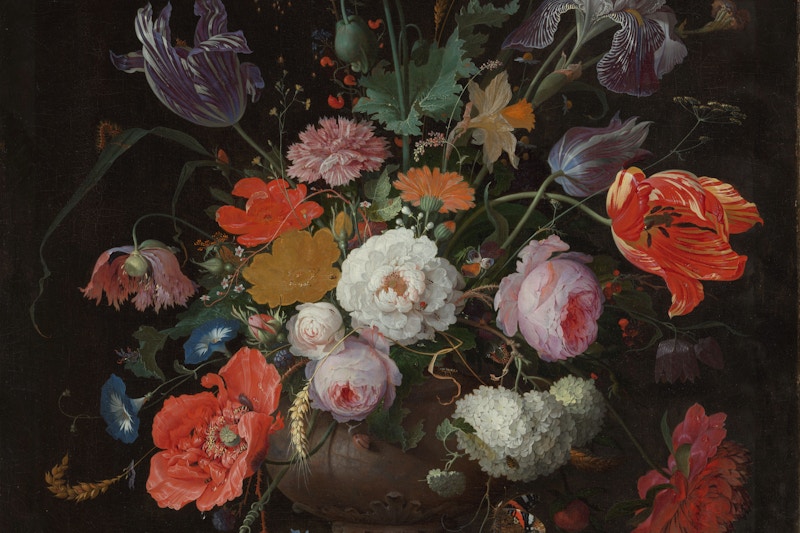
What Can Galleries Learn From Online Collectors?
Exploring the potential of the digital art market from a consumer perspective
- By Kerstin Gold
- Meet the Experts
The art market has always been an enigma. It is unlike any other industry. But the pandemic has become the great equalizer, disrupting many traditional business models. Cancelled events, travel bans, and the loss of foot traffic have forced the art world to adapt almost overnight. Fortunately, galleries, auction houses and fairs reacted with great creativity and courage. Because it was essential to stay connected with customers (and maintain visibility for artists), they began to try out unfamiliar digital technologies and channels.
The rise of the OVR
Previously, Online Viewing Rooms (OVRs) had been a fairly niche medium. But as venues closed, they suddenly became a popular substitute for physical attendance. David Zwirner, one of the first galleries to use an OVR, has been experimenting with the format since 2017. In June 2020, they hosted an impressive online-only exhibition of the Jeff Koons sculpture ‘Balloon Venus Lespugue (Red),’ which went online on public view for the first time. Viewers had access to rare behind-the-scenes videos, sketches and the artist's own commentary to guide them through the show. And that effort clearly paid off: the work sold for $8 million through the gallery’s online digital showroom—their biggest online sale so far.
Exhibitors turn to virtual reality
For some, showing art through a web page just wasn’t enough, so they turned to virtual reality as an alternative digital medium. Last year, ArtAncient pushed the boundaries of VR technology to tell the story of a late Hellenistic marble bust of Hercules which was recently rediscovered by a retired gardener. The London-based antiquities specialist created the immersive and visually intriguing presentation to enliven their contribution to last year’s TEFAF Online. The exhibition was a hybrid experience: part physical, part digital. Visitors could make an appointment with a hired gallery space in London and view the virtual exhibition with an Oculus headset provided at the gallery. This hybrid concept was very well received, with the appointments for the exhibition at Pall Mall mostly being booked out.

The art world embraces mainstream technologies
It wasn’t just niche technologies that boomed. For many dealers, Zoom and WhatsApp became standard tools of the trade, enabling them to do “Virtual Video Tours” and “Digital Walkthroughs.” These new formats ensured that sales discussions could still feel personal. Other formats such as Instagram Live Talks and podcasts provided exciting new ways to access art. Price quotes became socially acceptable, social media became a sales channel, and LinkedIn became an acquisition tool. QR codes, Instagram swipe-ups, and buy-now buttons offered opportunities for direct purchases, and some galleries even developed their own web stores. Streamed live auctions became social events, whole art fairs had—and still have—to reinvent themselves.
Selling art online attracts new customer groups
Despite the declining market volume, online sales increased in share from 10% to 37% in 2020 (Art Basel Mid-Year Report 2020). This impressive increase is partially attributed to the fact that new digital offerings have also attracted new customer groups. In a recent study published by Artsy, 73% of the galleries surveyed said that at least half of the collectors they had contact with online in 2020 were new customer contacts (Artsy Gallery Insights Report 2021). The art market’s growth and market share will, in all likelihood, be driven by increase in online sales. This leads to the question: how can the digital potential of the art market be tapped further?
To answer that question, let’s take a look at the online buyer’s perspective.

Online consumers have high expectations
The (potential) online art buyer is already very familiar with e-commerce. Speed, security, price transparency, return options, recommendation engines, same-day delivery, payment offers, and after-sales customer service are just some of the things that online consumers have come to expect. Successful online concepts such as mobile first (Clubhouse), streaming (Netflix, Spotify), or subscription (Samsung Frame) are characterized above all by an uncompromising focus on the user. These platforms identify customer needs early on and they use those insights to craft a unique buying experience.
Will the art market follow the precedent set by mainstream e-commerce? Art buyers certainly hope so. According to the recent ART+TECH Report Collectors Edition, two-thirds of all respondents wanted the option to have personal, in real-time contact with a gallery when shopping for art online. 24% specifically favored a live chat option, 25% the possibility for a video call. In the e-commerce world, this is called “conversational commerce” and is part of a growing trend to personalize the shopping experience even further. So technology that links a digital experience with personal dialogue certainly holds some of the greatest potential for the art market.
Insights from other creative industries also reveal that most of today’s consumers shop in a “hybrid” manner. Consumers first look to social networks for inspiration, research prices online, receive answers in real time, order products on a smartphone with a QR code. Later, they pick their purchases up on site or perhaps exchange them again.
So even if you love going to trade fairs and conversing with a gallerist, you probably also enjoy the speed and convenience of purchasing art on the iPad at the comfort of your home. They’re not mutually exclusive. According to the ART+TECH Report, collectors had bought art online after first seeing the original version in real life, whereas others had made an offline purchase after researching the artwork and finding more details about it online. These findings underscore how important it is to offer collectors a variety of online and offline options to contact sellers and finalize purchases.
Change is inevitable but the art market will always be unique
Art will always retain a special quality, and so will art collecting. But there’s no undoing the changes that the pandemic has unleashed. The way art is searched for, found and purchased is evolving. The traditional question of "How would I like to sell art as a gallery?" will be challenged by "How would a collector like to discover and buy art online today?"
Our attention must shift to the collector’s requirements, both as customers and as online users. If we make this our guiding principle, all actors in the art market can benefit from the fantastic opportunities and huge (sales) potential that we’ll unlock.

About the Author
Kerstin Gold is a Berlin-based independent strategy consultant for the art ecosystem. She advises commercial galleries, museums, foundations, start-ups, and market entrepreneurs on digital transformation and business design.
Gold is co-founder of Artpreneur.io, a think tank at the intersection of art+tech+business and is co-founder of the ART+TECH Report 2020, a joint initiative of Artpreneur.io and Office Impart. She holds a teaching assignment for Strategy, Business Design, and Strategic Marketing in the art market at the Freie Universität Berlin. She has an MA in business administration, is trained as a business coach, and has completed in-depth study programs such as Art Market Data Analysis (ArtTactic Lab), Management in the Art Market (Freie Universität Berlin), Augmented Reality in the Cultural Sector (HTW Berlin) and History of Art (University of Cambridge).


